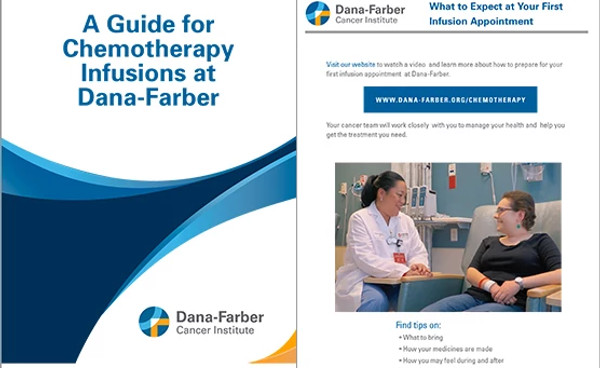If you have chemotherapy by infusion, the medication is delivered to your bloodstream through a needle in a vein from your arm or a central line. You might also receive supportive medications or treatments (such as hydration) by infusion.
Your first infusion appointment is generally the longest, so plan on a full day.
What to Expect at Your Infusion Appointment
- Laboratory Services: When you arrive for an infusion appointment, you will first visit Laboratory Services, where we will take a blood sample. This sample helps us determine your dose of chemotherapy and any other needed medicines.
- Exam visit: After your blood sample is taken, you will meet with your health care team. This may include your physician, nurse practitioner, or physician assistant. Your team will review your treatment plan and check your bloodwork before prescribing your medications for the day. The nursing staff will check and recheck your height and weight. This is another important step that helps determine the dose of chemotherapy.
- Waiting during preparation: Chemo is made to order every time you visit. This means it cannot be prepared ahead of time, so you may spend an hour or more in the waiting area. You may feel like nothing is happening, but this step is important for your safety. Our pharmacy and nurses are working together behind the scenes to prepare your medicine. It is prepared in a sterile environment and may need to be thawed or mixed with other medicines. After your medicine is prepared, it is checked and double-checked as it goes from pharmacy, to your infusion nurses, and then to you.
- Infusion: When your chemo is ready, a member of the nursing staff will help you get settled in an infusion area. To begin the process, you may get premedication or fluids. These medications can help with side effects like nausea. The actual infusion process can take several hours, but you can use this time for your own activities, such as reading, watching TV, browsing the Internet, or even taking a nap.
- After infusion: When your treatment is done, you may need to stay and be observed for a short time, to make sure you feel OK. Your nurse will meet with you to review potential side effects, tell you what to expect at home, and know what to do if you have a side effect.
- Before you go home: Make sure you have a list of your future appointments and the doctor's phone number. You may have questions and need to call us. We have nurses who work with your doctor, are knowledgeable about your treatment plan, and can help with your questions.
